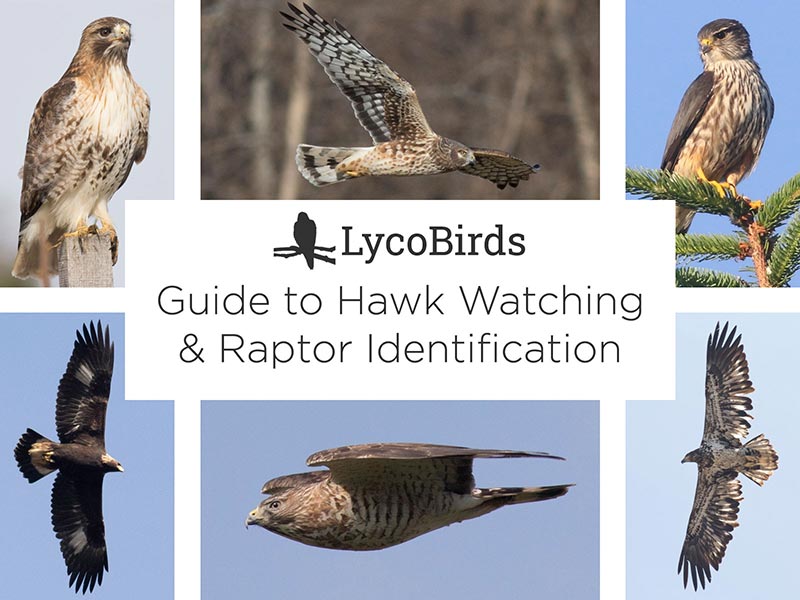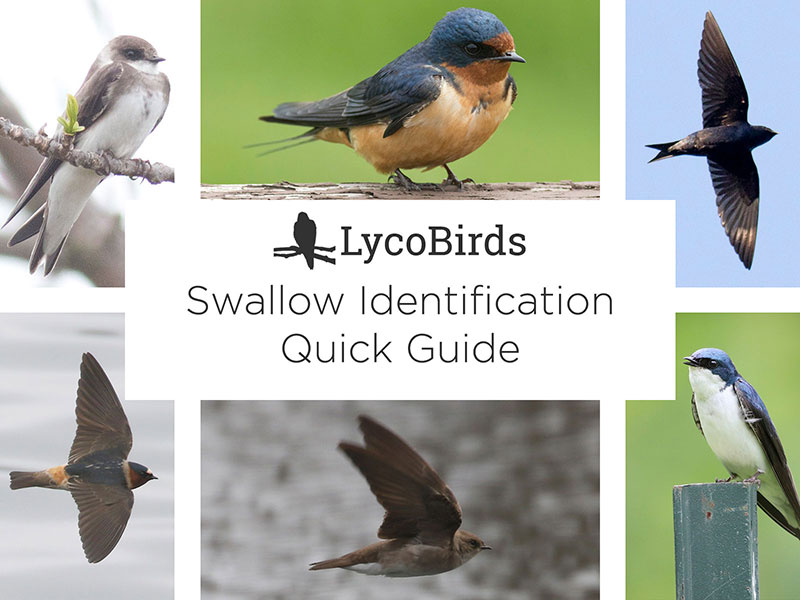How to Identify the 5 Major Groups of Raptors
Hawkwatching is a somewhat unusual activity compared to most other forms of birding. Bird field guides mostly focus on plumage to identify the hundreds of species you might encounter. But in hawkwatching, the birds are often so far away that most plumage detail is lost. So, what do you do instead?
Shape is often the key feature to start with when identifying flying raptors — especially the distant ones. Usually the species within a family share a similar shape. So, if you don't know how to articulate the difference between a falcon and a hawk, or are unsure what terms like Buteo and Accipiter mean, it would be a good idea to familiarize yourself with the different raptor families. That will give you a base to start the identification process.
Here, we cover how to identify the major groups of raptors that you will see while hawkwatching in the Northeastern U.S., although it will be a good start for anywhere in North America.
What are the major raptor families?
In the Northeast, we can break the diurnal raptors down into these 5 groups, roughly based on taxonomy:
- Buteo hawks
- Accipiter hawks
- Eagles
- Vultures**
- Falcons
**Technically, Vultures aren't raptors, but they definitely get honorary raptor status due to their large size and behavior.
There are two additional species that are common in the Northeast that don't fit in those groups, Northern Harrier and Osprey.
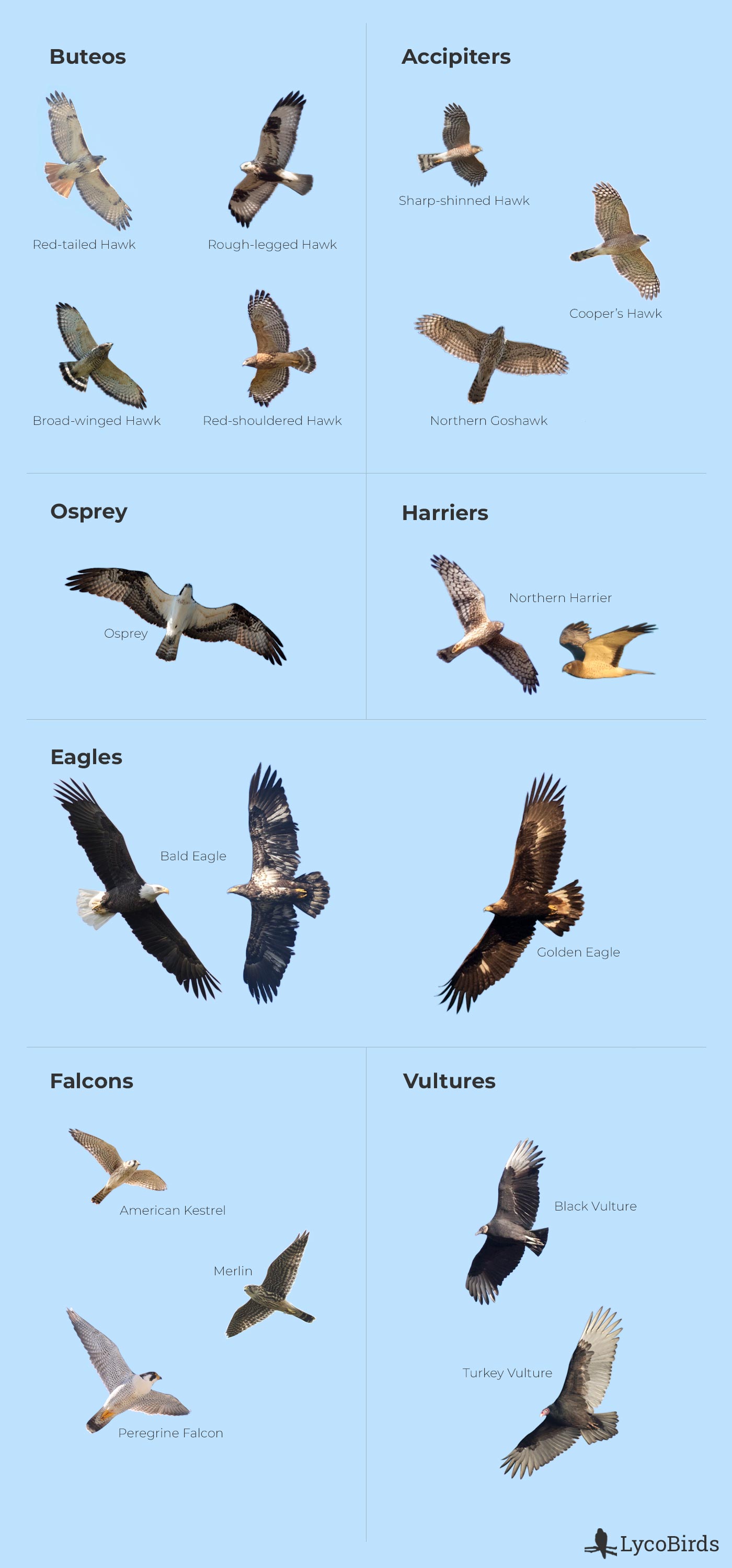
When identifying a raptor, the best approach is to first classify it to one of these groups before trying to identify it to species. To narrow it down to a group, you can use differences such as:
- overall shape
- length of the tail
- pointed vs rounded wings
- overall coloration
Next, we'll take a look at each group.
Buteos
This group of hawks all belong to the Buteo genus (pronounced "beauty-oh"). For example, Red-tailed Hawk = Buteo jamaicensis, Red-shouldered Hawk = Buteo lineatus, etc.
Elsewhere in the world, "hawks" in this family are called "buzzards." For example, Common Buzzard = Buteo buteo. Buzzard is also a North American slang term for vulture, which you should avoid for exactly this reason.
Buteos have that classic hawk shape. This shape is often the reference that other species are compared to so you should learn it well. They have broad wings and medium-length tails. Most have relatively blunt or rounded wingtips.
They are often seen soaring on thermals. Some, such as Broad-winged Hawks, migrate in large groups.
Learn More: Identifying Buteos
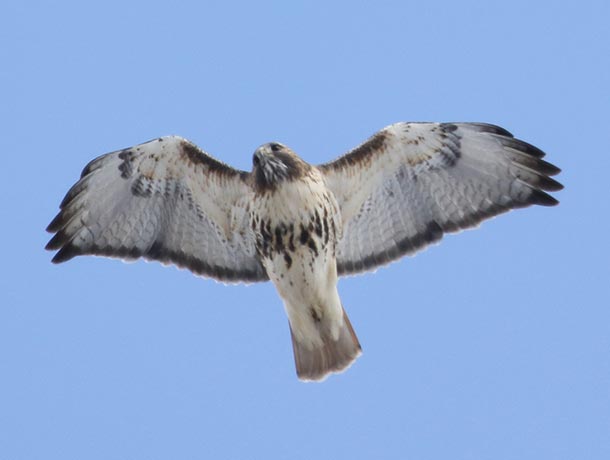
Red-tailed Hawk
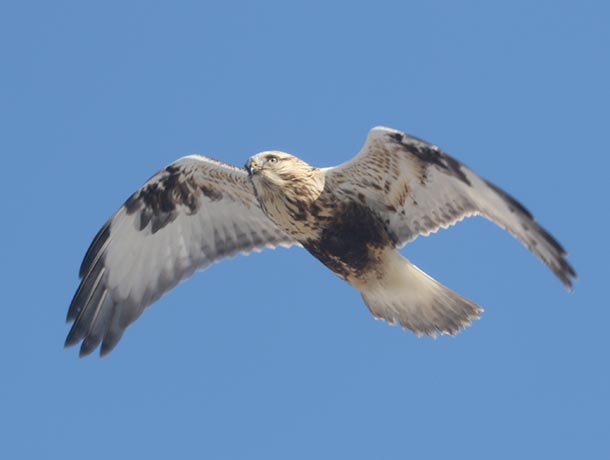
Rough-legged Hawk
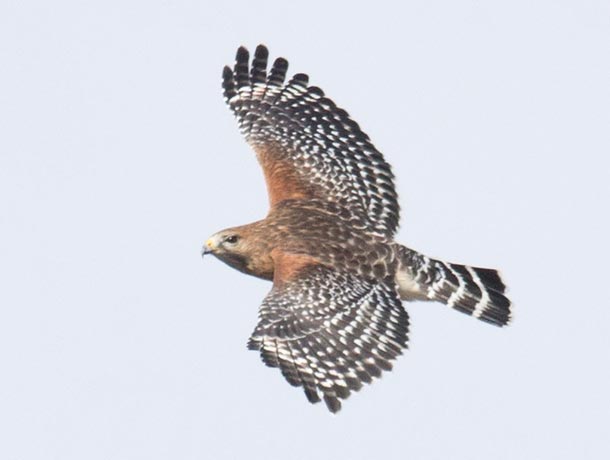
Red-shouldered Hawk
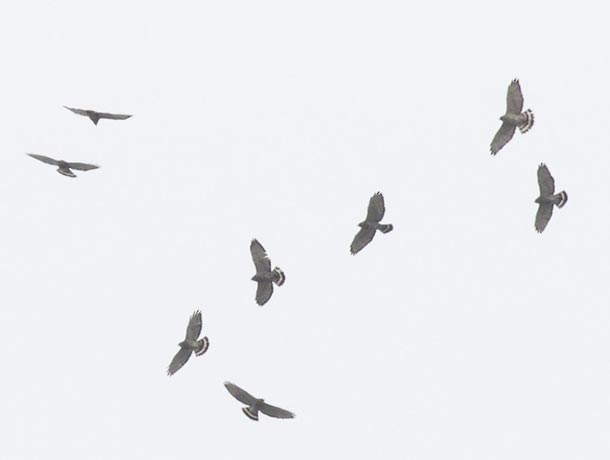
Part of a kettle of Broad-winged Hawks
Accipiters
Next let's take a look at the Accipiters. Again, Accipiter (pronounced "ack-SIP-it-er") is the genus name.
Our three Accipiter species vary greatly in size, from the small Sharp-shinned Hawk, to the crow-sized Cooper's Hawk, to the large and powerful American Goshawk (formerly called Northern Goshawk until 2023).
The Accipiters have shorter wings and long tails, giving them the appearance of a flying cross. Their tails give them maneuverability when chasing prey (such as songbirds) through forested areas or into the bushes near your bird feeders.
Accipiters tend to flap more than Buteos, and their flapping often follows the rhythm flap, flap, flap, glide… flap flap flap glide…
Learn More: Identifying Accipiters

Sharp-shinned Hawk
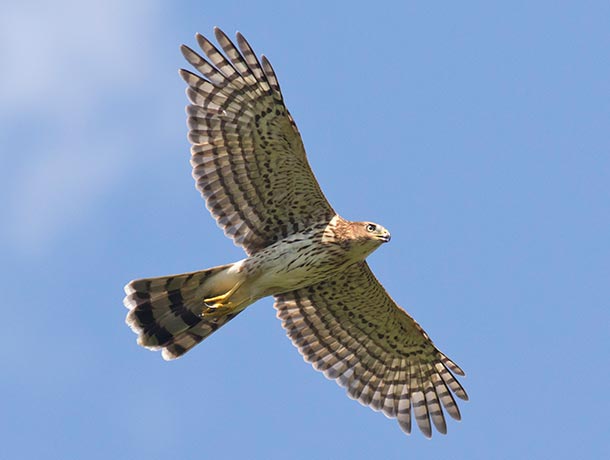
Cooper's Hawk
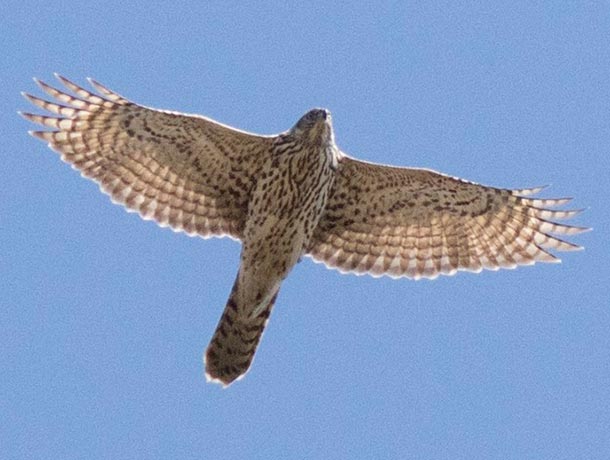
American Goshawk
Harriers
There are many harrier species around the world, but in North America, we only have Northern Harriers. They are medium-sized hawks associated with grasslands and marshes.
When hunting they stay low and show a distinctive white rump. When overhead, look for the long tail and long, somewhat pointed wings that they often hold in a dihedral.
Learn More: Identifying Northern Harriers
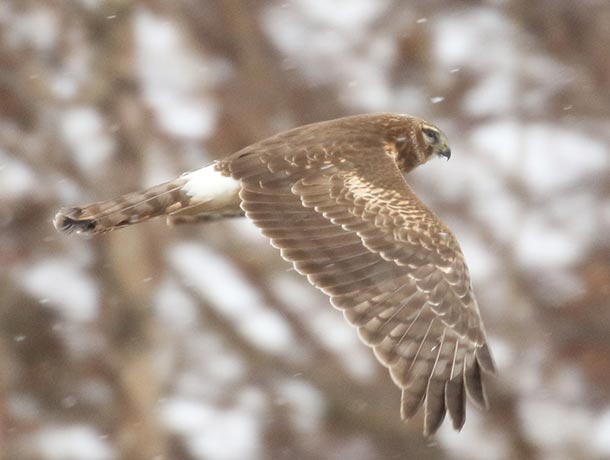
Northern Harrier
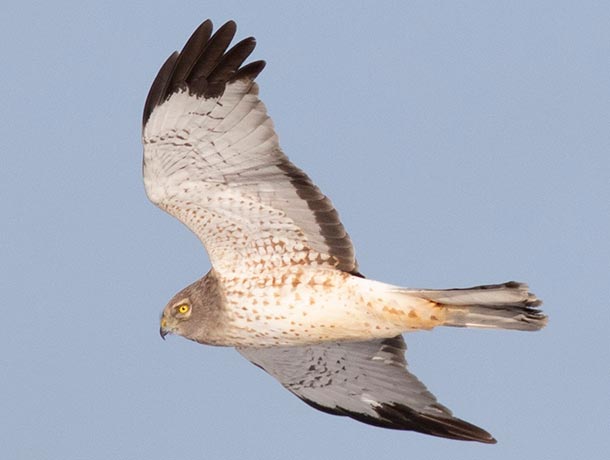
Northern Harrier
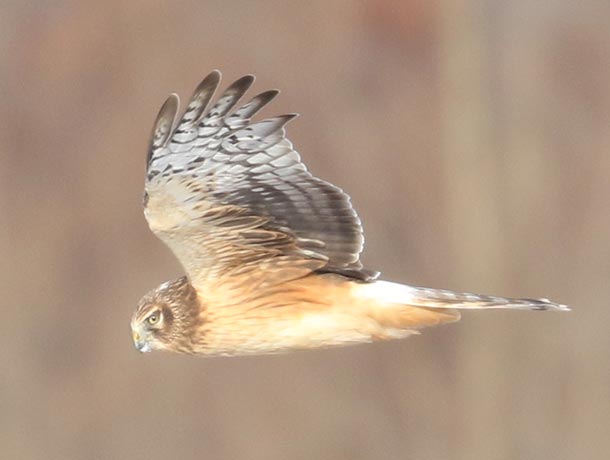
Northern Harrier
Eagles
Our two species, Bald Eagle and Golden Eagle, can both have wingspans of over seven feet, making them our largest raptors.
Eagles are huge, mostly-dark birds. From a distance they are most easily confused with vultures. However, eagles have larger (feathered) heads and are steady in flight, even in strong wind.
Learn More: Identifying Eagles
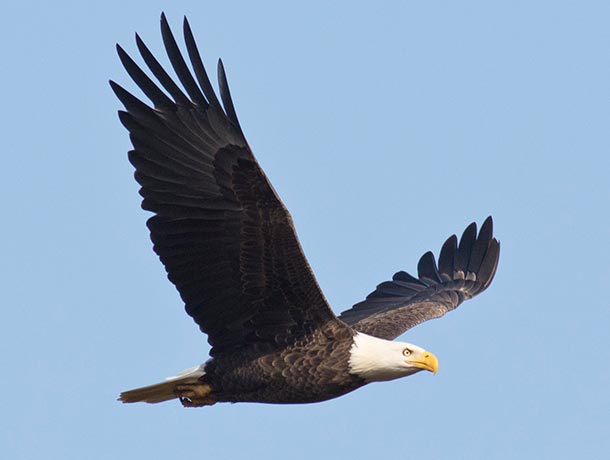
Bald Eagle
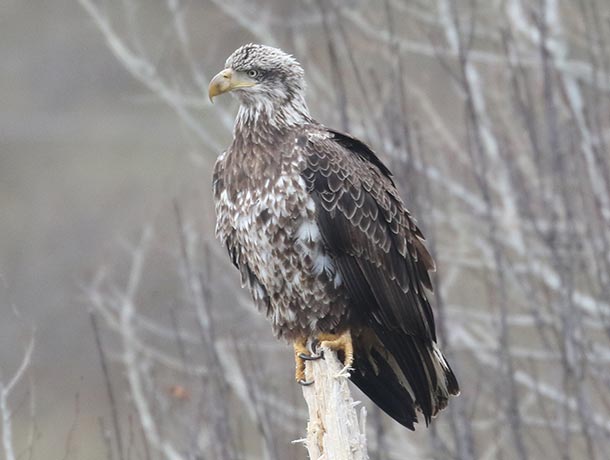
Bald Eagle
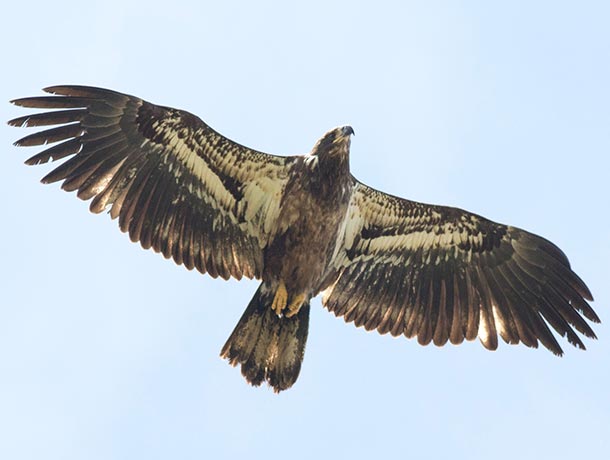
Bald Eagle
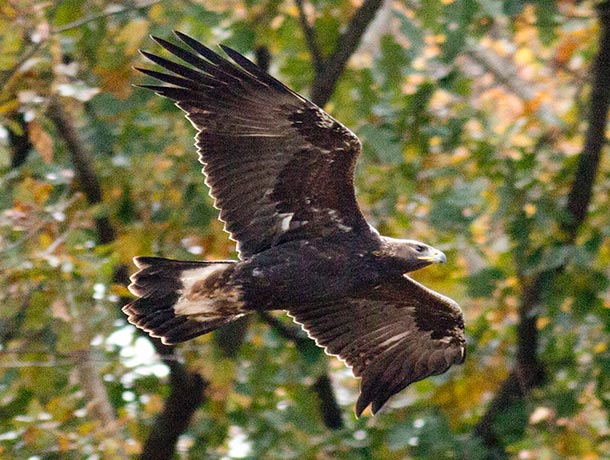
Golden Eagle
Osprey
The Osprey is a large and lanky raptor associated with water.
They have long, almost gull-like wings that often have a crook to them, as well as the overall black (dark brown if seen well) and white color pattern.
Learn More: Identifying an Osprey
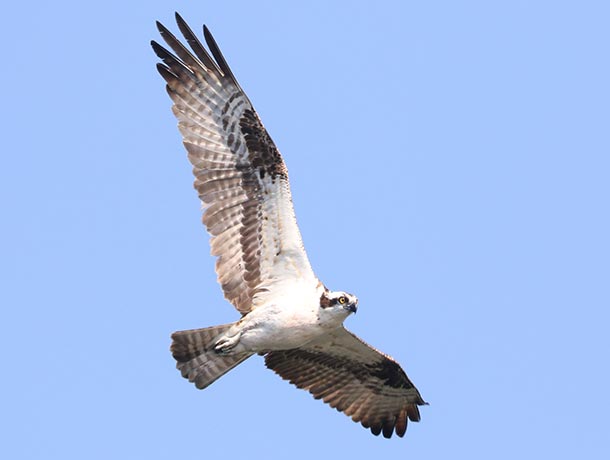
Osprey
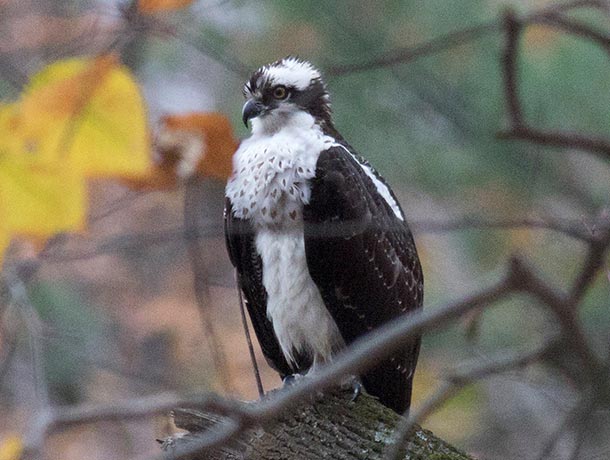
Osprey
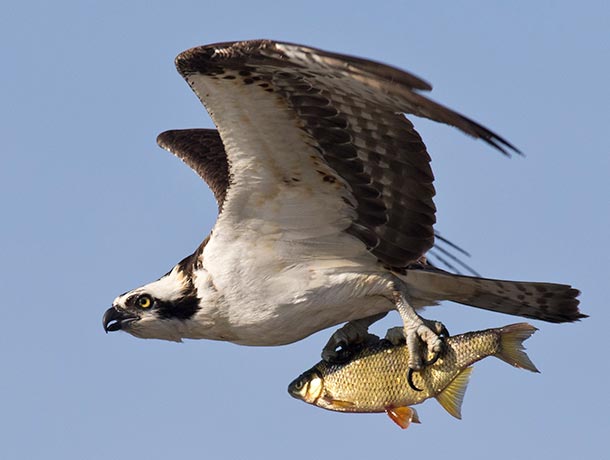
Osprey
Vultures
Technically, Vultures aren't raptors, but they definitely get honorary raptor status due to their large size and behavior.
Vultures are large and dark, but have small featherless heads. They often congregate in groups — both in the air and on the ground.
Learn More: Identifying Vultures
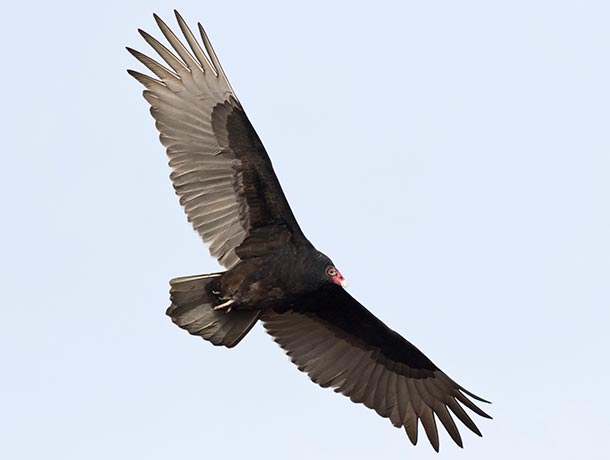
Turkey Vulture
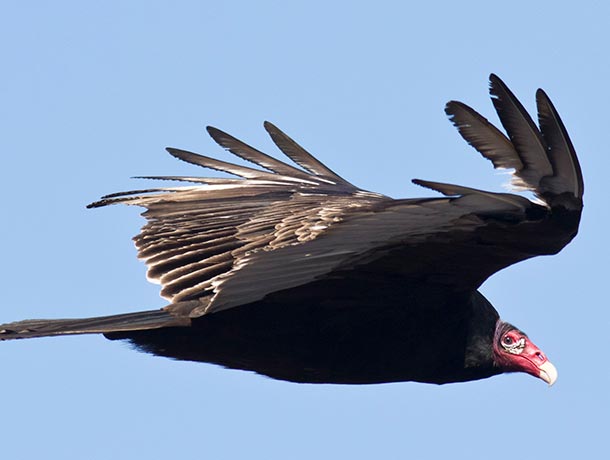
Turkey Vulture
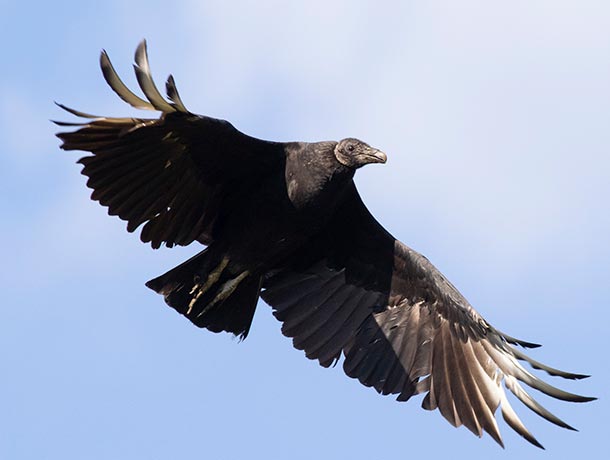
Black Vulture
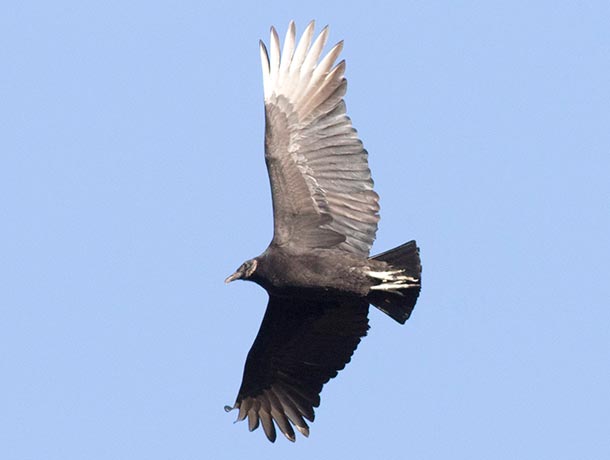
Black Vulture
Falcons
Unlike the forest-loving Accipiters, falcons are built for wide open spaces.
Falcons have pointed wings that they frequently flap for bursts of speed. Look for the combination of pointed wings and (typically) steady flapping.
Learn More: Identifying Falcons
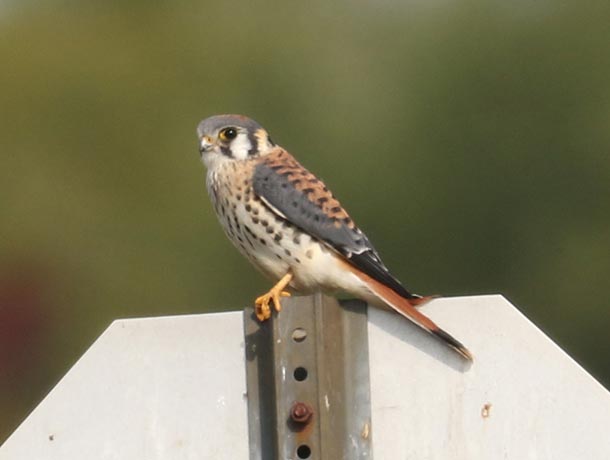
American Kestrel
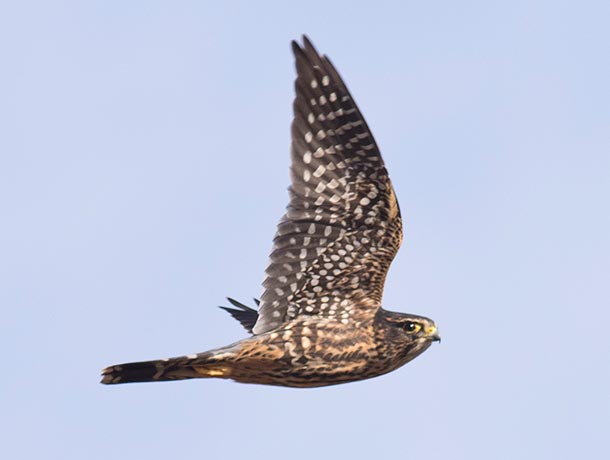
Merlin
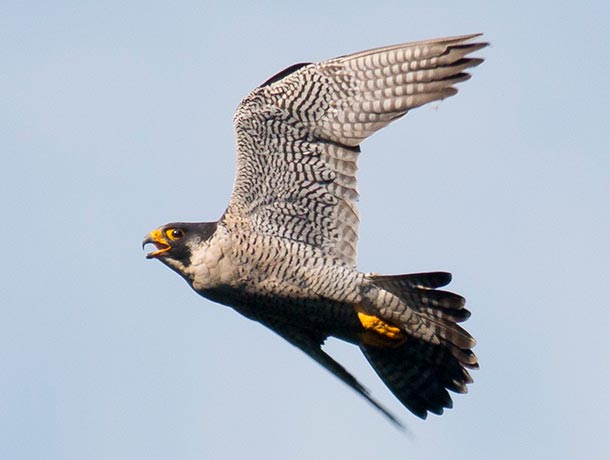
Peregrine Falcon
Bonus Group: Kites
Kites are rare in the Northeast, so they get relegated to the end, but they are worth a basic familiarity since Mississippi Kites seem to continue to push north more and more each year.
Kites have pointed wings, but fly very differently than falcons. They are much more graceful fliers, rather than relying on raw athleticism.
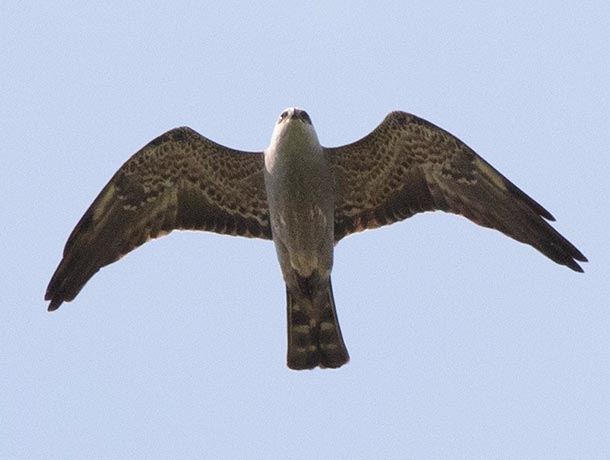
Mississippi Kite
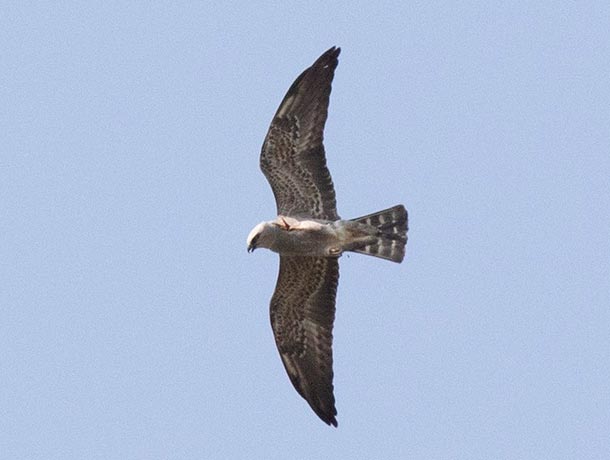
Mississippi Kite
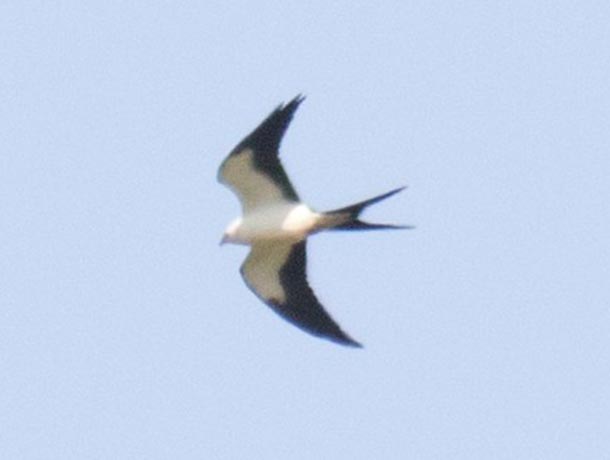
Swallow-tailed Kite
Next Steps
Now that you have an understanding of the different groups of raptors, you can move on to identifying them to the individual species. You can continue on with the rest of our raptor guide to get started.
All photos © David Brown or Bobby Brown.
Like this? Help fund more tools and projects on our site:
Support LycoBirds

